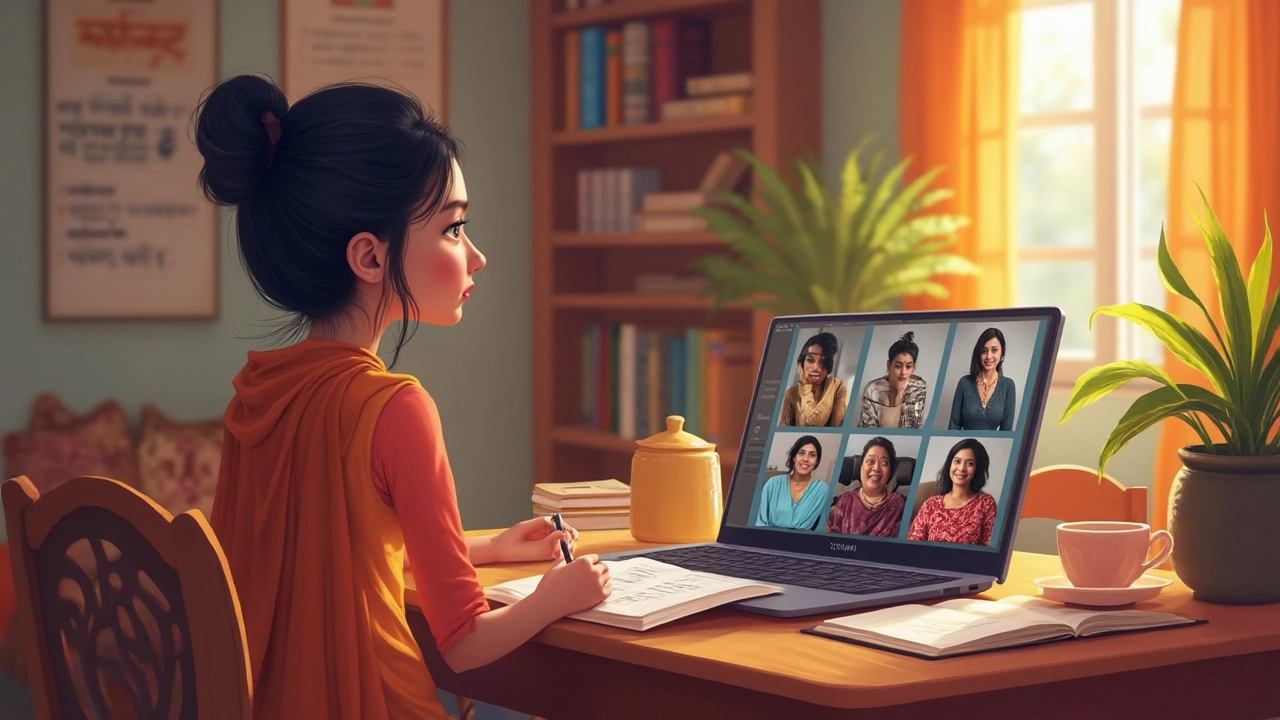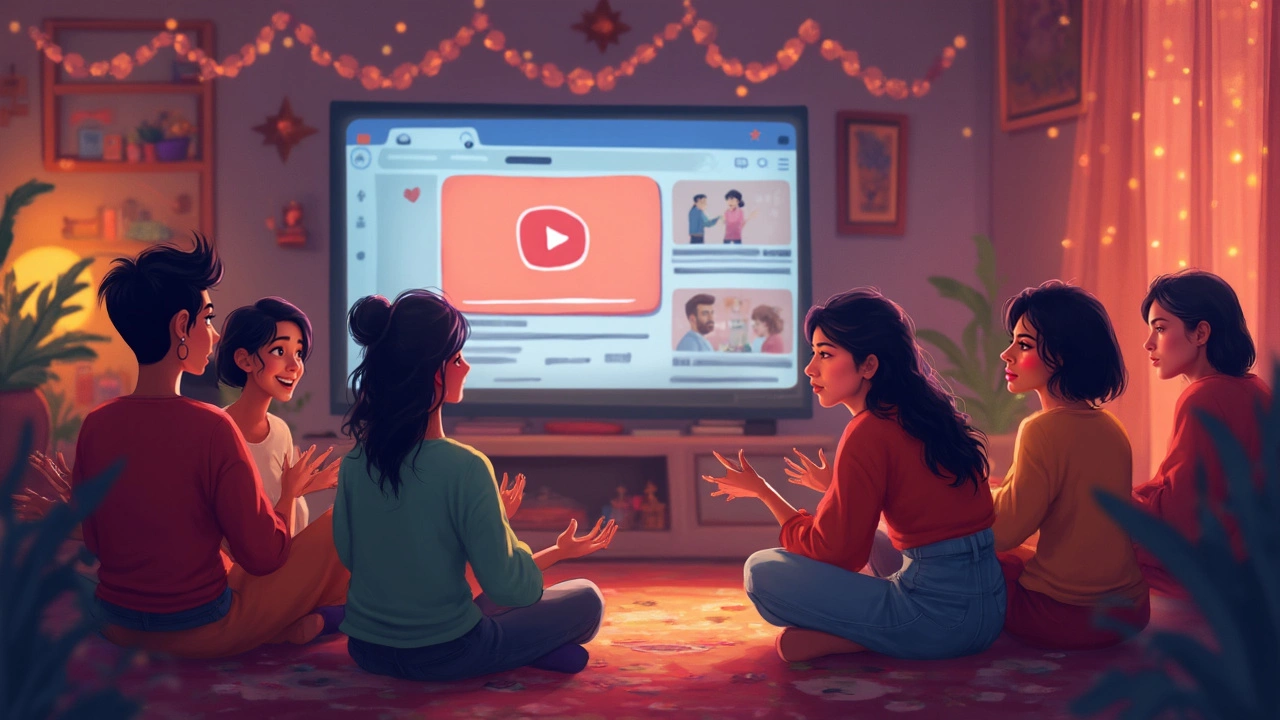Best YouTube Channels for Learning English: Top Choices for Fast Language Progress
 Jun, 23 2025
Jun, 23 2025
Picture this: you’re stuck on a bus, with nothing to do, and you start scrolling YouTube. Suddenly, there’s a video of someone teaching English—not from a boring classroom, but in a lively café, riding a train, or just chatting about their day. It almost feels like you’re hanging out with them, soaking up another language, bit by bit, without even trying that hard. That’s the magic of the best YouTube channels for learning English. Some have millions of subscribers, some just a few hundred thousand, but what separates the good from the great is how they make you want to come back for more.
Why YouTube is a Language Learner's Secret Weapon
Back in the day, learning English meant flipping through giant grammar books or sitting in awkward classes, praying your teacher wouldn’t call on you. With YouTube in your pocket, you’ve got access to accents from around the world, real-life conversations, and tips you won’t find anywhere else. Here’s the kicker: a 2024 report by Global English Insights found that people who used YouTube to supplement their learning advanced up to 35% faster than those who stuck to traditional methods. Turns out, variety and authenticity matter.
But it isn’t just about speed. You can literally hear how people use slang, respond to jokes, or order food in a noisy restaurant. I remember showing my son, Nishant, a video where someone ordered coffee in British English and then in American English. His eyes lit up—there’s more than one way to ask for something as simple as a latte! This level of exposure is impossible in most textbook settings.
YouTube is also the best spot to learn at your own pace. Feel stuck? Pause, rewind, or rewatch until those tricky phrases sink in. Want to feel extra smart? Turn on English subtitles and see if you can keep up. Plus, there are channels for every style—animated explanations, street interviews, silly sketches, news breakdowns, and grammar hacks. The community comments below each video are a goldmine for support and shared struggles.
Let’s not forget accessibility: it’s free. You don’t need to drop cash on expensive courses. All you need is a phone and some curiosity. Learners from every background, country, and schedule can now sound like a native at no extra cost. That’s why “learn English” is a perennial top search on YouTube, with more than 85 million monthly hits as of May 2025. Language isn’t about perfection; it’s about connection, and YouTube brings that concept to life better than anywhere else online.

The Best English Learning Channels on YouTube: What Sets Them Apart?
You type “learn English” into YouTube, and more than 2 million channels pop up. It’s a jungle out there. So, which ones actually work, and which are just a waste of your time?
You want more than endless grammar rules or robotic pronunciation drills. The best channels teach you how people really speak—contractions, slang, cultural quirks, and the weird stuff no textbook covers. Here’s what sets the cream of the crop apart:
- English Addict with Mr. Duncan: An absolute legend based in England, Mr. Duncan has been creating free English lessons on YouTube since 2006. His videos tackle real-world topics—you’ll find him teaching English in his garden, during a walk, or in front of a steaming cup of tea. He explains phrases and slang in a way that feels natural, not staged. Plus, he’s funny and a bit quirky, which makes the lessons stick.
- English with Lucy: If British English is your goal, Lucy is the one to watch. Her crisp accent and practical approach break down confusing grammar and pronunciation. She often brings in native guest speakers, so you hear a variety of accents and styles. Lucy is also big on vocabulary for everyday life—think job interviews, travel, and dating. Pro tip: Her pronunciation guides are golden if you want to sound like the Queen (or at least less like a tourist).
- Rachel’s English: Have you ever stumbled over American English sounds? Rachel breaks it all down—mouth shapes, tongue placement, subtle vowel shifts—without being boring. She uses slow motion, diagrams, and plenty of real-life examples. Her “real English in real life” series is a must for learning how Americans really talk (not just how they write).
- EnglishClass101: This channel is a powerhouse—packed with everything from beginner basics to advanced conversation. Their animated dialogues feel like watching mini TV shows, but with explanations after every line. The channel updates all the time, so you never run out of content. Want a daily lesson? They’ve got you covered.
- VOA Learning English: Maybe you want more news and less chit-chat. VOA posts short news stories in slow, clear English. You get current events, new vocabulary, and examples you could use right away. It’s great if you’re preparing for tests or job interviews.
- English with Jennifer: Jennifer’s lessons are slower-paced, detailed, and incredibly clear—ideal for total beginners. Her teaching style is warm and patient, and most videos feel like a friendly conversation. She covers grammar, listening skills, and how to keep improving long after you finish her videos.
- mmmEnglish: Emma, based in Australia, combines serious tips with a light, encouraging style. Her channel is big on “real life English”—so you’ll learn how language actually works in coffee shops, at work, or when making friends abroad. And yes, you do get plenty of Australian slang along the way.
- English with Adriana: If you love practical lessons walking you through common conversations (shopping, chatting at a party, travel mishaps), Adriana’s got a friendly, energetic vibe that makes English learning way less intimidating.
If you’re just starting, go for English with Jennifer or VOA Learning English. If you’re intermediate, Emma or Lucy are ideal for polishing your skills. Ready to dive deeper? Rachel’s English can fine-tune your accent and listening skills fast. For daily, bite-sized routines, EnglishClass101 is tough to beat.
One interesting tip: set up YouTube “playlists” for themes you want to master, like dating lingo, work emails, or travel vocabulary. Mix up channels so you don’t get bored or stuck with one teaching style. This way, when you have five minutes waiting in line, you’ve got a useful video ready to roll.
And don’t skip the comment section—ask questions, share ideas, or even connect with other learners for practice. I’ve seen folks get real-time corrections from native speakers, just because they left a funny comment about their struggles with the word “thorough.”

Getting the Most Out of YouTube English Lessons: Real-World Hacks
It’s one thing to binge-watch English videos and another to actually remember and use what you’ve learned. Anyone can press “Play” a hundred times, but not everyone walks away sounding more natural or confident. What’s the secret?
First—don’t treat YouTube like Netflix. Watch actively, not just passively. Have a notebook or your phone’s notes app open. Write down new words or phrases that jump out at you. Pause and repeat, even if you sound silly talking to your cat. If you hear a phrase you want to master, record yourself saying it right after the video ends. This tiny trick flips your brain into active-learning mode, which scientists say improves retention by 50%.
Use YouTube’s slowed-down playback speed—handy for catching those subway-fast accents. Start at 0.75x speed, then bump it up as you get comfortable. Turn on captions, but in English, not your native language. This trains your ears and eyes at the same time—kind of like sneaking in double practice without any extra effort.
Next: aim for consistency. Ten minutes a day beats two hours on a random weekend. Build YouTube English into your daily routine. I get Nishant involved by watching a quick phrasal verbs video while cooking dinner. My spouse once picked up the phrase “hit the sack” in the middle of folding laundry, and we both still laugh about it. Language seeps in fastest during routine, low-pressure moments.
Record your progress. Every Sunday, pull up your YouTube history and jot down five new things you remember from the week. Revisiting videos works like spaced repetition—every replay re-cements information in your head. If you’re preparing for a specific goal, like the IELTS or TOEFL test, use channels that have playlists for exam skills or simulated practice tests.
For shy learners, join a channel’s private Facebook group or comment section to practice typing out questions and get feedback. Many YouTube teachers host live Q&A sessions or livestream “coffee chats”—the perfect spot to ask about weird idioms or, honestly, just to say hey. The trick is to lean into community, not just binge on videos in isolation.
If you’re feeling brave, challenge yourself with vlogs or native-level storytimes, even if you don’t understand everything at first. This is where you start “thinking in English” without translating. One of the best surprises? After a few weeks, you’ll catch yourself understanding way more than you thought—accents, jokes, speed, attitude, all of it. That’s a huge motivator to keep going.
Remember, the learn English playlist that works for your best friend might not be your thing. Experiment. If you get bored or find a teacher’s style annoying, move on. There are literally thousands of other options. And sometimes, you’ll surprise yourself. My own “ah-ha” came watching an English cooking channel, where the chef cracked jokes while making pasta. Turns out, laughter and carbs are pretty good for language learning.
If you ever hit a plateau, mix in channels for specific skills: pronunciation, idioms, or “English for work.” YouTube’s recommendation algorithm can actually be your friend—after a few days, it starts suggesting videos that match your interests and level. Ride that wave, and suddenly English isn’t just something you study; it’s something you live.